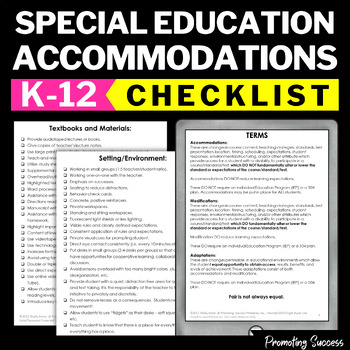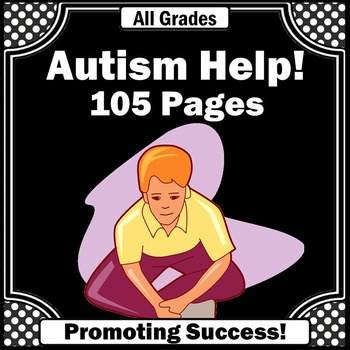Click HERE to SUBSCRIBE to our newsletter for SECRET SALES and FREE printables.
Click HERE to view our Teachers Pay Teachers Promoting Success store.
Note: This blog post contains resources from our TpT store and Amazon Associate store.
---------------------------------
An FBA is a Functional Behavioral Assessment. The Individuals with Disabilities Education Act does not define how a functional behavioral assessment is done. The process may vary with the needs of each child. However, several specific steps are always part of this kind of assessment. The process begins with identifying the specific behaviors that must change. If a child has many problem behaviors, it will be important to focus on the most serious one or two behaviors. The problem behaviors are described in a way that helps everyone to understand exactly what the behaviors are.
These are typical steps:
Identify and agree on the behavior(s) that most need to change.
Determine where the behaviors occur and where they do not.
Identify what may contribute to the behaviors. The team will ask these kinds of questions:
1. What is unique about the environments where behaviors are not a concern?
2. What is different in the places where the problem behaviors do occur? Could they be related to how the child and teacher get along? Does the number of other students or the work a child is asked to do cause the problem? Could the time of day or a child's mood affect the behaviors? Was there a bus problem or a disagreement in the hallway?
3. Are the behaviors likely to occur in a specific set of circumstances or a specific setting? What events seem to support the problem behaviors?
Collect data on the child's performance from as many sources as possible.
Develop a hypothesis about why problem behaviors occur (the function of the behaviors).
A hypothesis is an educated guess, based on data. It helps predict where and why problem behaviors are most likely to occur, and where and why they are least likely to occur.
Identify other behaviors that can be taught that will serve the same function for the child.
Test the hypothesis.
The team develops and uses positive behavioral interventions that are written into the child's IEP or behavior intervention plan.
Evaluate the success of the interventions.
Change or fine-tune as needed.
If children have behaviors that place them or others in danger, they may need a crisis intervention plan. Crisis interventions should be developed before they are needed. The team should decide what behaviors are crises and what they (and the child) will do in a crisis. By having a plan that guides actions, teachers can help children through difficult emotional situations.
For a checklist of 175+ accommodations, click the picture:
To implement a plan of action:
Autism Help Strategies - 105 Pages!
---------------------------------------
You may also like these resources from our Amazon Associate store:
This 6 page laminated reference guide provides an efficient and effective template/model to conduct Functional Behavioral Assessments (FBAs) and Behavioral Intervention Plans (BIP) that work.
---------------------------------------
---------------------------------------
This guide to functional assessment procedures includes a variety of strategies for assessing problem behavior situations, and presents a systematic approach for designing behavioral support programs based on those assessments.
---------------------------------------
Premium Magnetic Reward & Responsibility Chart (13" x 17") with an Easy to Hang cord, Dry Erase Marker with eraser cap + 207 Kid Friendly Magnets your kids will Absolutely LOVE! + BONUS Printable Clip Charts: Days of the Week, Months of the Year, & Behavior Chart
---------------------------------------
---------------------------------------
Click HERE to view our Teachers Pay Teachers Promoting Success store.
Click HERE to SUBSCRIBE to our newsletter for SECRET SALES and FREE printables.
Click HERE to follow us on Instagram.
Click HERE to follow us on Pinterest.
Shelly Anton is a participant in the Amazon Services LLC Associates Program, an affiliate advertising program designed to provide a means for sites to earn advertising fees by advertising and linking to Amazon.com. ** This means there are Amazon affiliate links in these blog posts. This does not mean you pay a dime more when you purchase a product through the link. It just means I am trying to save you valuable teacher time by making it easier for you to find teaching resources for your students, and I earn a few cents for my research and time. Thank you for all you do for kids!











